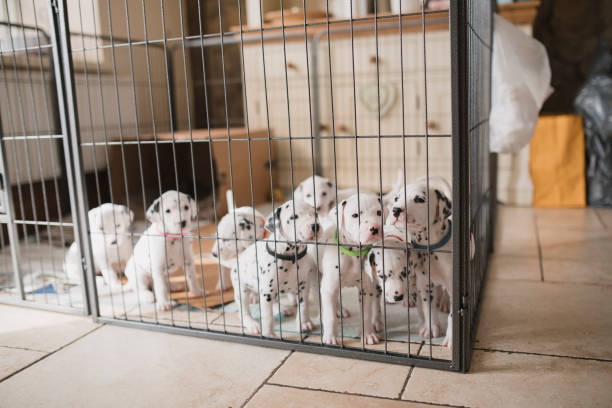Correlates of Pen Size and Housing Conditions on the Behaviour of Kennelled Dogs

The dog (Canis familiaris) has been domesticated for thousands of years but the effects of different housing regimens on canine behaviour are poorly understood. This study presents behavioural data collected from solitary and group-housed dogs housed in animal shelters and laboratories. The dogs differed greatly in their behaviour under the different housing regimens. Solitary dogs were more inactive (72–85% of observed time compared with group-housed dogs 54–62% of observed time), and spent more time in non-social repetitive locomotory behaviour categories (4–5% compared with group-housed 0.9–2% of observed time). Group-housed dogs were not only able to interact socially, but also spent more time investigating the floor of their pens, presumably because of the increased olfactory stimuli. Group-housed laboratory dogs provided with kennels used them for: rest, play and the control of social interactions. Single-housed dogs, which were housed in smaller pens, had low overall activity and tended towards stereotyped circling rather than pacing. At all the sites the opportunities for interactions with humans were limited (0.24–2.52% of the time observed). The results are discussed in terms of cage design and animal husbandry.
Hubrecht, R.C., Serpell, J.A., and Poole, T.B. (1992). Correlates of pen size and housing conditions on the behaviour of kennelled dogs. Applied Animal Behaviour Science, 34(4), 365-383. DOI: 10.1016/S0168-1591(05)80096-6.
Photo: iStock.com/SolStock
View ResourceTopic(s): Adequate Space, Behavior, Breeder Resource, Dog to Dog, Environment, Kennel Design, Social Interactions